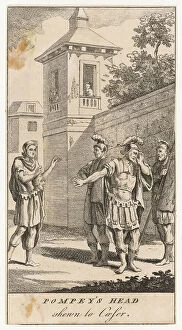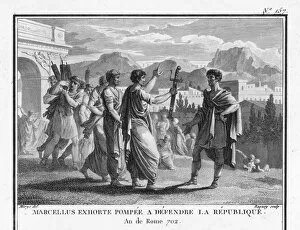Pompeius Collection
"Pompeius: The Great Military and Political Leader of Ancient Rome" Pompeius, also known as Pompey the Great or Pompey the Triumvir
All Professionally Made to Order for Quick Shipping
"Pompeius: The Great Military and Political Leader of Ancient Rome" Pompeius, also known as Pompey the Great or Pompey the Triumvir, was a distinguished figure in Roman history. Born in 106 BC, he rose to prominence through his exceptional military skills and political acumen. One of the most iconic representations of Pompey is his bust, which showcases his strong features and determined gaze. This depiction captures the essence of a man who played a crucial role in shaping the late Roman Republic. Pompeius' military prowess was evident during significant battles like Pharsalus. His strategic genius led him to victory on numerous occasions, earning him respect among both allies and adversaries alike. He commanded immense loyalty from soldiers such as Gnaius Pompeius, Sextus Pompeius, Cneius Pompeius, Rufus Quintus Pompeius - all inspired by their leader's unwavering dedication. Beyond his military achievements, Pompey was also deeply involved in politics. He formed alliances with influential figures like Julius Caesar and married Julia, Caesar's daughter. Their union symbolized an important alliance between two powerful families within ancient Rome. The aquatint depicting Julia further highlights her significance as she stood at the intersection of two prominent dynasties - that of Caesar and Pompey. Her marriage to Pompey not only solidified their bond but also showcased their shared ambition for power and influence. Pompey's legacy extends far beyond his lifetime; even today, historians recognize him as one of Rome's greatest leaders. In Crabbs Historical Dictionary published in 1825, he is described as a distinguished figure whose contributions left an indelible mark on Roman history. From youth to maturity until his untimely death in 48 BC at age 58 during civil war turmoil – every phase of Pompeo’s life shaped him into an extraordinary leader admired for centuries after his passing.























